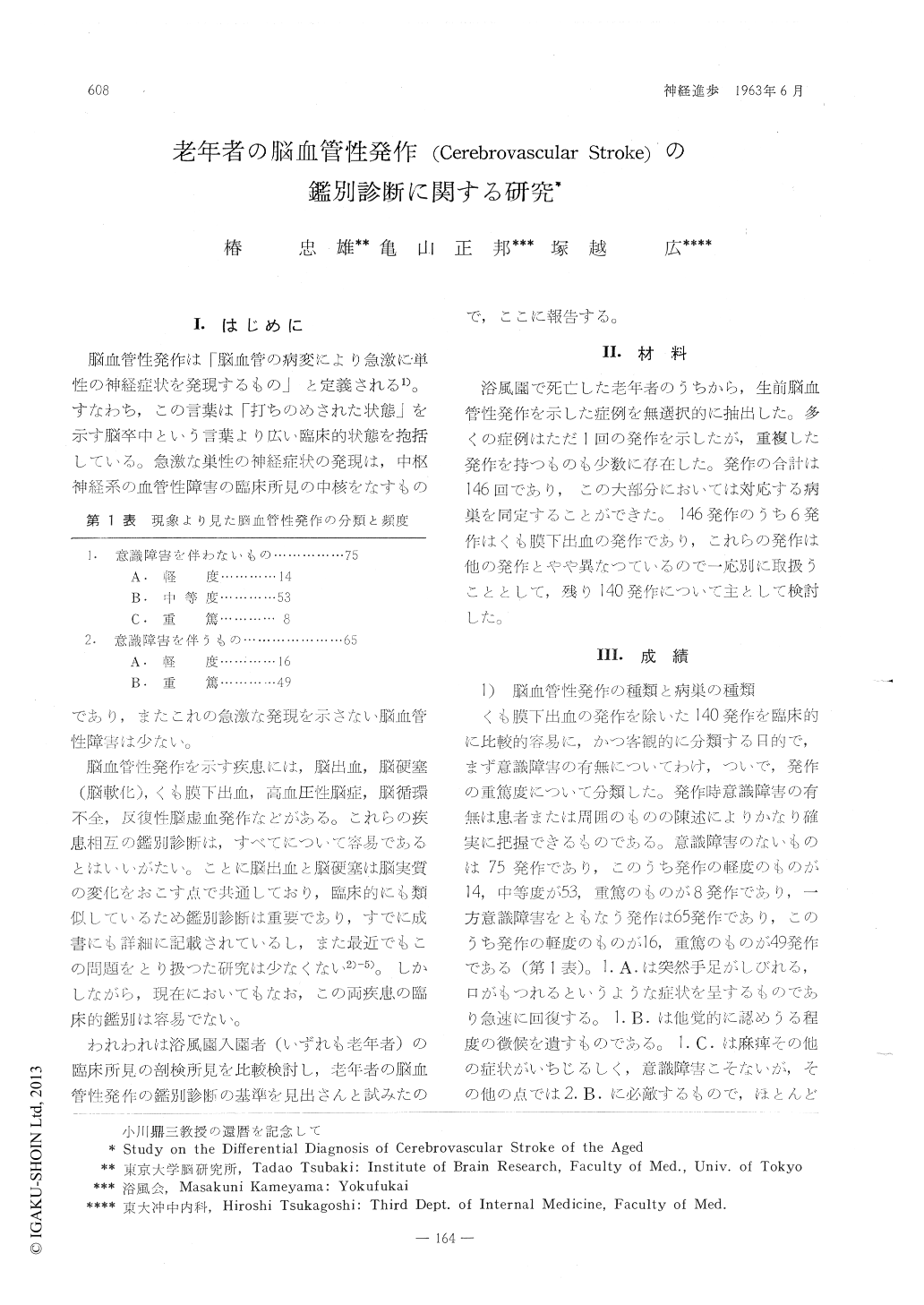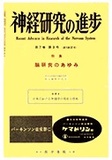Japanese
English
- 有料閲覧
- Abstract 文献概要
- 1ページ目 Look Inside
I.はじめに
脳血管性発作は「脳」血管の病変により急激に単性の神経症状を発現するもの」と定義される1)。すなわち,この言葉は「打ちのめされた状態」を示す脳卒中という言葉より広い臨床的状態を抱括している。急激な巣性の神経夢症状の発現は,中枢神経系の血管性障害の臨床所見の中核をなすものであり,またこれの急激な発現を示さない脳血管性障害は少ない。
脳血管性発作を示す疾患には,脳出血,脳硬塞(脳軟化),くも膜下出血,高血圧性脳症,脳循環不全,反復性脳虚血発称などがある。これらの疾患相互の鑑別診断は,すべてについて容易であるとはいいがたい。ことに脳出血と脳硬塞は脳実質の変化をおこす点で共通しており,臨床的にも類似しているため鑑別診断は重要であり,すでに成書にも詳細に記載されているし,また最近でもこの問題をとり扱つた研究は少なくない2)−5)。しかしながら,現在においてもなお,この両疾患の臨床的鑑別は容易でない。
In an attempt to obtain criteria of the diffe-rential diagnosis of cerebrovascular strokes in old people, careful clinical and post-mortem examinations are carried out on cases above the age of 60 at the Yokufukai, a home for the aged. 146 strokes were available for the study.
1) In the brains of patients who had history of severe stroke, cerebral hemorrhage is more commonly found than infarct, while in the brains of patients who had history of little stroke or stroke without impaired consciousness, infarct is more common.
2) Severe stroke which accompanies several of the following signs, such as acute onset, deep coma, tetraplegia, bilateral pyramidal sign, extremely high blood pressure, elevation of blood pressure after the stroke, vomiting, hema-turia, albuminuria, high fever, tachycardia, convulsion and nuchal rigidity, is usually the sign of cerebral hemorrhage. In stroke of cere-bral infarction, the above signs are relatively rare, even if the stroke is severe.
3) Cerebral hemorrhage and infarction can not be easily differentiate each other, when the strokes are mild or little.

Copyright © 1963, Igaku-Shoin Ltd. All rights reserved.


